What is a Business Continuity Planner?
Occupation Description Develop, maintain, or implement business continuity and disaster recovery strategies and solutions, including risk assessments, business impact analyses, strategy selection, and documentation of business continuity and disaster recovery procedures. Plan, conduct, and debrief regular mock-disaster exercises to test the adequacy of existing plans and strategies, updating procedures and plans regularly. Act as a coordinator for continuity efforts after a disruption event.
What Do Business Continuity Planners Do On a Daily Basis?
- Maintain and update organization information technology applications and network systems blueprints.
- Create scenarios to reestablish operations from various types of business disruptions.
- Recommend or implement methods to monitor, evaluate, or enable resolution of safety, operations, or compliance interruptions.
- Conduct or oversee contingency plan integration and operation.
- Design or implement products and services to mitigate risk or facilitate use of technology-based tools and methods.
- Attend professional meetings, read literature, and participate in training or other educational offerings to keep abreast of new developments and technologies related to disaster recovery and business continuity.
Featured schools near , edit
Business Continuity Planner Needed Skills
When polled, Business Continuity Planners say the following skills are most frequently used in their jobs:
Judgment and Decision Making: Considering the relative costs and benefits of potential actions to choose the most appropriate one.
Complex Problem Solving: Identifying complex problems and reviewing related information to develop and evaluate options and implement solutions.
Speaking: Talking to others to convey information effectively.
Writing: Communicating effectively in writing as appropriate for the needs of the audience.
Reading Comprehension: Understanding written sentences and paragraphs in work related documents.
Critical Thinking: Using logic and reasoning to identify the strengths and weaknesses of alternative solutions, conclusions or approaches to problems.
Related Job Titles for this Occupation:
- Business Continuity Professional
- Business Continuity Administrator
- Business Continuity Planning Manager
- Project Controls Specialist
- Enterprise Resiliency Manager
Are There Job Opportunities for Business Continuity Planners?
In the United States, there were 1,023,900 jobs for Business Continuity Planner in 2016. New jobs are being produced at a rate of 8.8% which is above the national average. The Bureau of Labor Statistics predicts 90,400 new jobs for Business Continuity Planner by 2026. There will be an estimated 104,200 positions for Business Continuity Planner per year.

The states with the most job growth for Business Continuity Planner are Utah, Nevada, and Arkansas. Watch out if you plan on working in Alaska, Maine, or Oklahoma. These states have the worst job growth for this type of profession.
Business Continuity Planner Salary
The typical yearly salary for Business Continuity Planners is somewhere between $38,420 and $123,000.
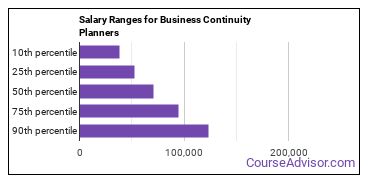
Business Continuity Planners who work in District of Columbia, Maryland, or Virginia, make the highest salaries.
Below is a list of the median annual salaries for Business Continuity Planners in different U.S. states.
| State | Annual Mean Salary |
|---|---|
| Alabama | $85,140 |
| Alaska | $82,160 |
| Arizona | $67,670 |
| Arkansas | $59,530 |
| California | $83,470 |
| Colorado | $82,130 |
| Connecticut | $78,120 |
| Delaware | $81,880 |
| District of Columbia | $102,730 |
| Florida | $66,440 |
| Georgia | $75,070 |
| Hawaii | $73,310 |
| Idaho | $67,630 |
| Illinois | $71,780 |
| Indiana | $61,290 |
| Iowa | $65,020 |
| Kansas | $74,520 |
| Kentucky | $66,450 |
| Louisiana | $60,430 |
| Maine | $66,760 |
| Maryland | $91,400 |
| Massachusetts | $85,980 |
| Michigan | $70,410 |
| Minnesota | $71,220 |
| Mississippi | $65,650 |
| Missouri | $73,500 |
| Montana | $66,290 |
| Nebraska | $74,370 |
| Nevada | $71,580 |
| New Hampshire | $70,890 |
| New Jersey | $78,920 |
| New Mexico | $70,340 |
| New York | $83,330 |
| North Carolina | $74,040 |
| North Dakota | $73,010 |
| Ohio | $71,190 |
| Oklahoma | $72,940 |
| Oregon | $68,890 |
| Pennsylvania | $80,910 |
| Rhode Island | $80,380 |
| South Carolina | $69,340 |
| South Dakota | $70,830 |
| Tennessee | $62,330 |
| Texas | $80,140 |
| Utah | $72,100 |
| Vermont | $67,910 |
| Virginia | $88,180 |
| Washington | $77,850 |
| West Virginia | $70,180 |
| Wisconsin | $57,620 |
| Wyoming | $69,740 |
What Tools & Technology do Business Continuity Planners Use?
Below is a list of the types of tools and technologies that Business Continuity Planners may use on a daily basis:
- Microsoft Excel
- Microsoft Word
- Microsoft Office
- Microsoft PowerPoint
- Microsoft Outlook
- Web browser software
- Microsoft Access
- Data entry software
- Microsoft Project
- Adobe Systems Adobe Acrobat
- Microsoft SharePoint
- Microsoft Visio
- Structured query language SQL
- Microsoft SQL Server
- Oracle JD Edwards EnterpriseOne
- Oracle Primavera Enterprise Project Portfolio Management
- Teradata Database
- SAP Crystal Reports
- Atlassian JIRA
- Confluence
How do I Become a Business Continuity Planner?
What education is needed to be a Business Continuity Planner?
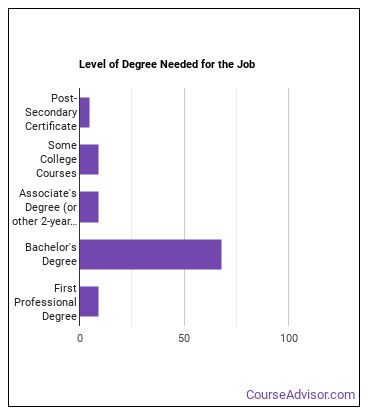
How Long Does it Take to Become a Business Continuity Planner?
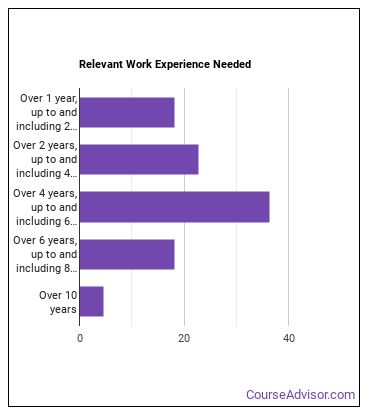
Where Business Continuity Planners Work
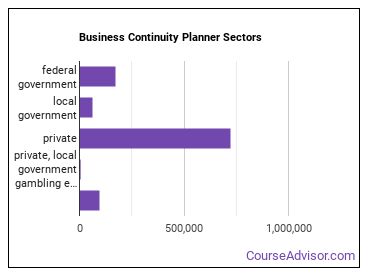
The table below shows some of the most common industries where those employed in this career field work.
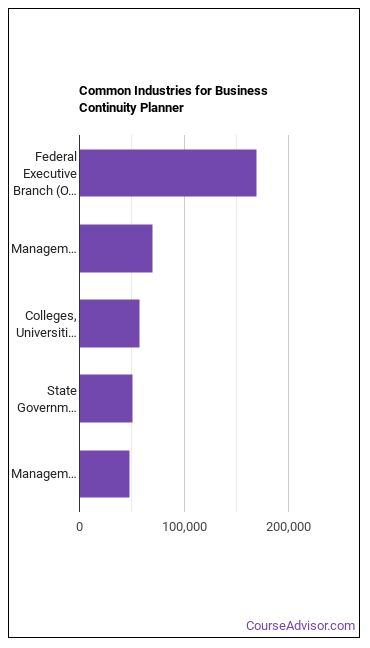
References:
More about our data sources and methodologies.
Featured Schools
 Request Info
Request Info
|
Southern New Hampshire University You have goals. Southern New Hampshire University can help you get there. Whether you need a bachelor's degree to get into a career or want a master's degree to move up in your current career, SNHU has an online program for you. Find your degree from over 200 online programs. Learn More > |
